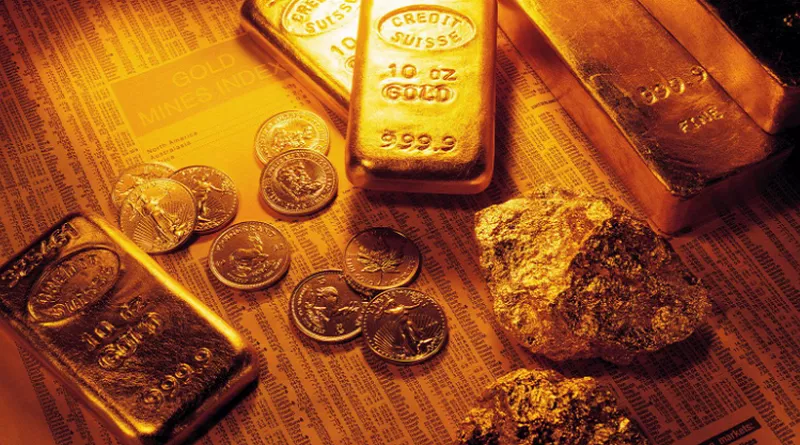Gold is one of the most sought-after metals in the world, known for its beauty, rarity, and intrinsic value. Among its various forms, 24K gold (pure gold) and 22K gold (approximately 91.7% gold) are popular choices in jewelry and investment. Understanding how to convert 24K gold to 22K gold is essential for jewelers, investors, and consumers looking to customize their gold pieces. This article delves into the conversion process, including the reasons for conversion, the methods involved, and key considerations.
Understanding Gold Purity
What Does Karat Mean?
The karat (K) system measures the purity of gold, with 24K being pure gold. Each karat value indicates the proportion of gold in the alloy. Here’s a breakdown:
24K Gold: 99.9% pure gold, the highest quality available.
22K Gold: 91.7% pure gold, commonly used in jewelry.
18K Gold: 75% pure gold, offers a balance between purity and durability.
14K Gold: 58.3% pure gold, widely used for affordable jewelry.
Importance of Gold Purity
The purity of gold affects its color, strength, and value. Higher karat gold, such as 24K, has a brighter yellow hue but is softer and more prone to scratching. Conversely, lower karat gold, like 22K, is more durable due to the addition of alloy metals, making it a popular choice for jewelry that is worn daily.
Reasons for Converting 24K Gold to 22K Gold
1. Durability
22K gold is more durable than 24K gold due to the presence of alloy metals. This increased strength makes 22K gold a practical choice for everyday wear, particularly in rings and bracelets.
2. Cost-Effectiveness
Converting 24K gold to 22K can make jewelry more affordable while still retaining a high level of gold purity. For jewelers, this conversion can provide a profitable option for creating attractive pieces without using pure gold.
3. Aesthetic Preferences
Some consumers prefer the slightly different hue of 22K gold, which can have a richer, deeper color due to the alloy blend. Converting 24K gold allows for customization to meet specific design preferences.
The Conversion Process
Converting 24K gold to 22K gold involves adding alloy metals to reduce the gold content from 99.9% to 91.7%. Below is a detailed explanation of the process.
Materials Needed
24K Gold: The pure gold that needs to be converted.
Alloy Metals: Commonly used metals include copper, silver, or zinc. The choice of alloy can affect the final color and properties of the gold.
Scale: To measure the weight of gold and alloy metals accurately.
Crucible: A heat-resistant container for melting the gold and alloy.
Torch or Furnace: To provide the necessary heat for melting the metals.
Mold: To shape the newly mixed alloy into desired forms.
Step-by-Step Conversion
Calculate the Required Alloy Weight
To convert 24K gold to 22K gold, you need to determine how much alloy to add. The formula to calculate the amount of alloy needed is:
Weight of Gold×( 24−22/24)=Weight of Alloy
For example, if you have 100 grams of 24K gold:
100×( 24−22/24 )=100×( 2/24 )=8.33 grams of alloy
Prepare the Gold and Alloy
Weigh the Gold: Use the scale to weigh the amount of 24K gold.
Measure the Alloy: Weigh the calculated amount of alloy metals required for the conversion.
Melt the Gold and Alloy
Set Up the Crucible: Place the weighed 24K gold and alloy metals into the crucible.
Apply Heat: Use the torch or furnace to heat the crucible until the metals melt and blend together. The melting point of gold is approximately 1,064°C (1,947°F).
Pour into a Mold
Once the gold and alloy are fully melted and combined, carefully pour the molten mixture into a mold. Allow it to cool and solidify.
Test the Purity
After the gold has cooled, it is essential to test the purity to ensure it is indeed 22K. This can be done using:
Acid Testing Kits: These kits allow you to test the gold’s purity by applying different acids.
XRF Analyzer: A more advanced option, this device uses X-rays to determine the gold content accurately.
Safety Precautions
Wear Protective Gear: Always wear safety goggles, gloves, and a protective apron when melting metals.
Work in a Ventilated Area: Ensure proper ventilation to avoid inhaling fumes.
Handle Tools with Care: Be cautious when using torches or furnaces to prevent burns or accidents.
Factors to Consider
Quality of Alloy Metals
The type and quality of alloy metals can affect the final appearance and properties of 22K gold. Copper provides a reddish hue, while silver offers a lighter tone. Choose the alloy based on the desired outcome.
Environmental Regulations
Be aware of any regulations regarding the handling and disposal of metals, especially if working in a commercial setting. Follow local guidelines for safe practices.
Costs Involved
Calculate the costs associated with conversion, including the price of alloy metals, energy consumption for melting, and any tools or equipment used. Ensure that the conversion is economically viable.
Conclusion
Converting 24K gold to 22K gold is a valuable skill for jewelers and goldsmiths, allowing for the creation of durable, aesthetically pleasing pieces at a lower cost. By understanding the conversion process, the factors involved, and safety precautions, you can confidently transform pure gold into a more versatile form. Whether for personal use or commercial purposes, knowledge of gold conversion opens up a world of possibilities in jewelry design and investment.
Related topics:
- Understanding the Value of 14K Gold by the Gram
- Understanding 24 Carat Gold: Significance and Purity Explained
- 417 Gold: Value, Composition, and Market Insights


